Here we list all the new books about women artists that have come to our attention, published in the second quarter of this calendar year. Descriptions are drawn from the blurb on the publisher’s website. If you know of other titles that should be on this list, please let us know by comment or by email (Erika@artherstory.net).

- “The Immensity of the Universe” in the Art of Giovanna Garzoni, by Sheila Barker with Aoife Cosgrove, Anatole Tchikine, Sheila ffolliott, Elena Fumagalli, Mary D. Garrard, Lucia Tongiorgi Tomasi, Francesco Morena, Peter M. Lukehart, and Pasquale Focarile. Publisher: Casa Editrice Sillabe (2020).
Giovanna Garzoni astonished Europe with a virtuosic miniature technique for capturing reality, as highlighted in this splendid catalogue, which explores a much fuller range of her production to reveal how her images addressed, and in turn stimulated, the rise of cultural globalism and a new sense of connectivity across a vast geography. Her artworks kindle the wondrous delight she felt upon encountering porcelain from Ming China, shells from the Gulf of California, marigolds from Mexico, and a lapdog from England. Seen through her curious eye, the exotic is naturalized and the marvelous is masterfully counterfeited. Her art invites us to reflect upon the infinite complexity of the world, even its smallest parts.
This book is the catalogue for the exhibition “La grandezza del universo” nell’arte di Giovanna Garzoni, put on by the Uffizi in June 2020.
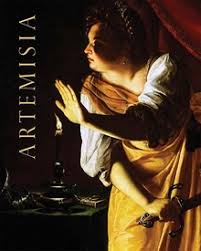
- Artemisia, by Letizia Treves with Sheila Barker, Patrizia Cavazzini, Elizabeth Cropper, Larry Keith, Francesco Solinas, and Francesca Whitlum-Cooper. Co-publishers: UK – National Gallery and US – Yale University Press (2020).
Artemisia Gentileschi’s paintings are recognized for their dramatic power and originality, showing the artist to be one of the most compelling storytellers of her time. This beautiful book includes essays on her life and career; a discussion of her personal and artistic relationship with her father; a summary of critical writings and an overview of the wide range of approaches to Artemisia’s work since her rediscovery by feminist art historians more than 50 years ago; a more personal insight into Artemisia through her letters; a discussion of the artist’s self-representation in her work; and an essay dedicated to her painting technique.
This book is the first exhibition catalogue dedicated only to Artemisia Gentileschi. It accompanies Artemisia, the exhibition originally planned by London’s National Gallery to open in April 2020, which has been postponed due to COVID-19. The new exhibition dates have not yet been announced.

- Grim Glory: Lee Miller’s Britain at War, by Ami Bouhassane. Publisher: Lee Miller Archives (2020).
Lee Miller, an American with no permit to work, arrived in Britain just as war was declared. She used her camera as her principle means of combat during World War II. Before she left Britain to report in Europe, Lee covered the Blitz, civilians braving the destruction around them, and their contributions to the war effort. She also photographed wartime fashion, camouflage, and women working in the armed forces on the home front. This book contains 75 images (of which 50 are full page) and an essay by Ami Bouhassane.
The book accompanies an exhibition of the same name at Farleys House & Gallery. It was originally scheduled to open in early June 2020, but has been postponed due to COVID-19. The new exhibition dates have not yet been announced.

- Fantastic Women: Surreal Worlds from Meret Oppenheim to Frida Kahlo, edited by Ingrid Pfeiffer. Publisher: Hirmer Verlag, 2020.
The women artists of Surrealism sought a new female identity and incidentally discovered their own language of forms. And then there was the examination of political topics, literature and foreign myths. Painting, drawing, objects, photography and films complement each other to create an overall picture of the surreal and fanciful creative work of the women artists of the avant-garde from all over the world.
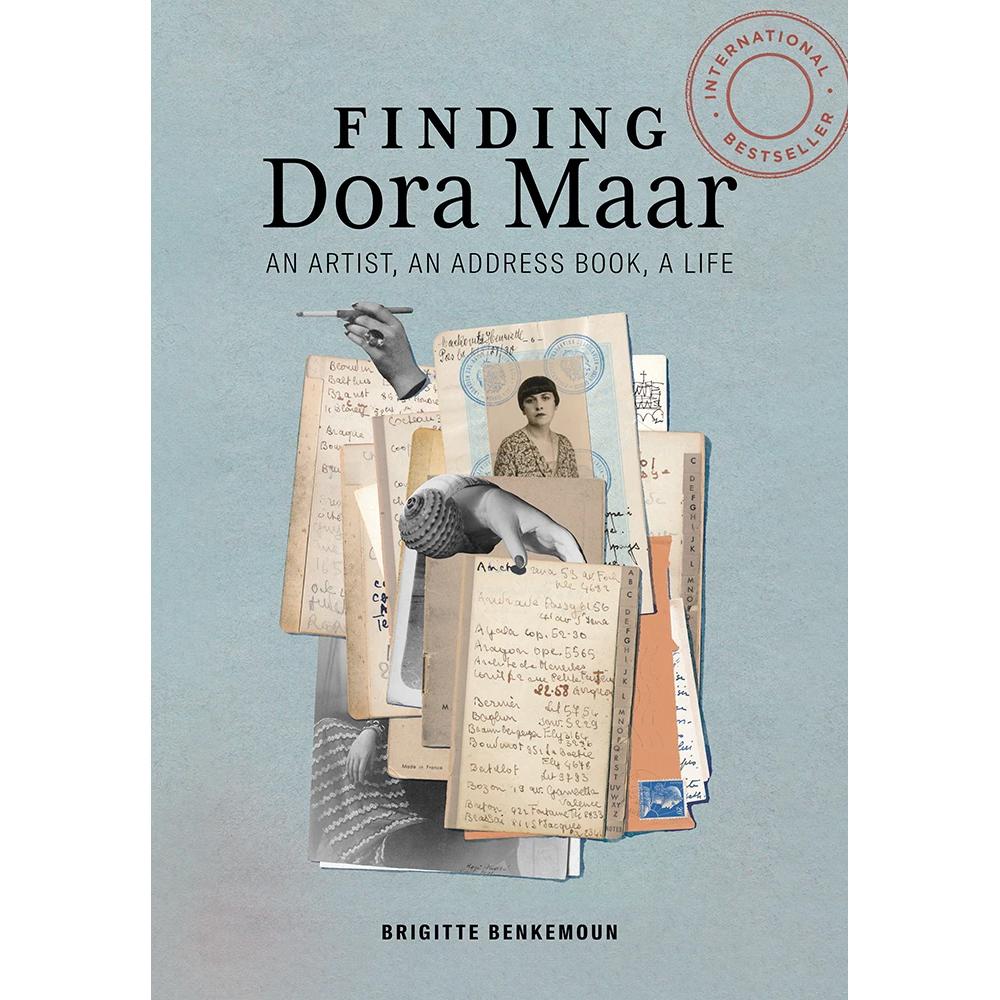
- Finding Dora Maar: An Artist, an Address Book, a Life, by Brigitte Benkemoun; translated by Jody Gladding. Publisher: Getty Publications (2020).
In search of a replacement for his lost Hermès agenda, Brigitte Benkemoun’s husband buys a vintage diary on eBay. When it arrives, she opens it and finds inside private notes dating back to 1951—twenty pages of phone numbers and addresses for Balthus, Brassaï, André Breton, Jean Cocteau, Paul Éluard, Leonor Fini, Jacqueline Lamba, and other artistic luminaries of the European avant-garde.
After realizing that the address book belonged to Dora Maar—Picasso’s famous “Weeping Woman” and a brilliant artist in her own right—Benkemoun embarks on a two-year voyage of discovery to learn more about this provocative, passionate, and enigmatic woman, and the role that each of these figures played in her life.
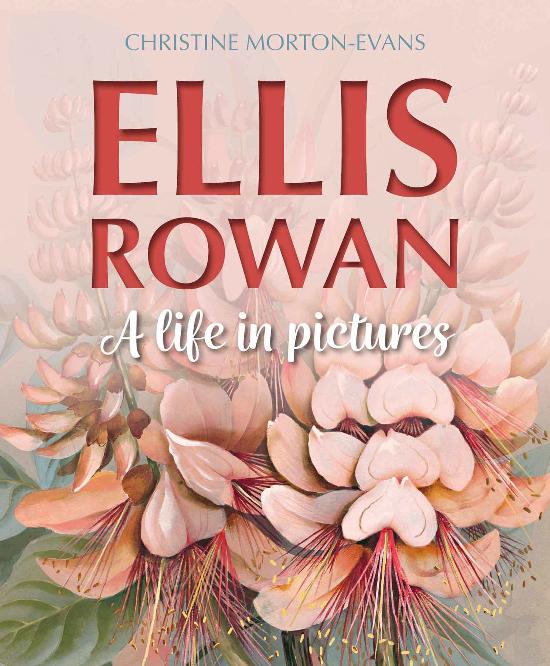
- Ellis Rowan: A Life in Pictures, by Christine Morton-Evans. Publisher: National Library of Australia (2020).
Over the course of 50 years, Marian “Ellis” Rowan (1848–1922) journeyed to many wild and inhospitable places in Australia and beyond, searching for her beloved wildflowers and wildlife subjects, always impeccably dressed in long skirt, high-button boots, and wide-brimmed hat. At the age of 70, she ventured alone into the jungles of New Guinea, the first Australian woman to do so.
Hers was a solitary, dedicated life, but one coloured by enthusiasm, energy and optimism. Her curiosity about people, places and nature, and her ability to make friends of strangers, allowed adventures to fall into her lap. This is her story, told through the wonderful paintings that form part of her collection of 970 works held by the National Library of Australia.
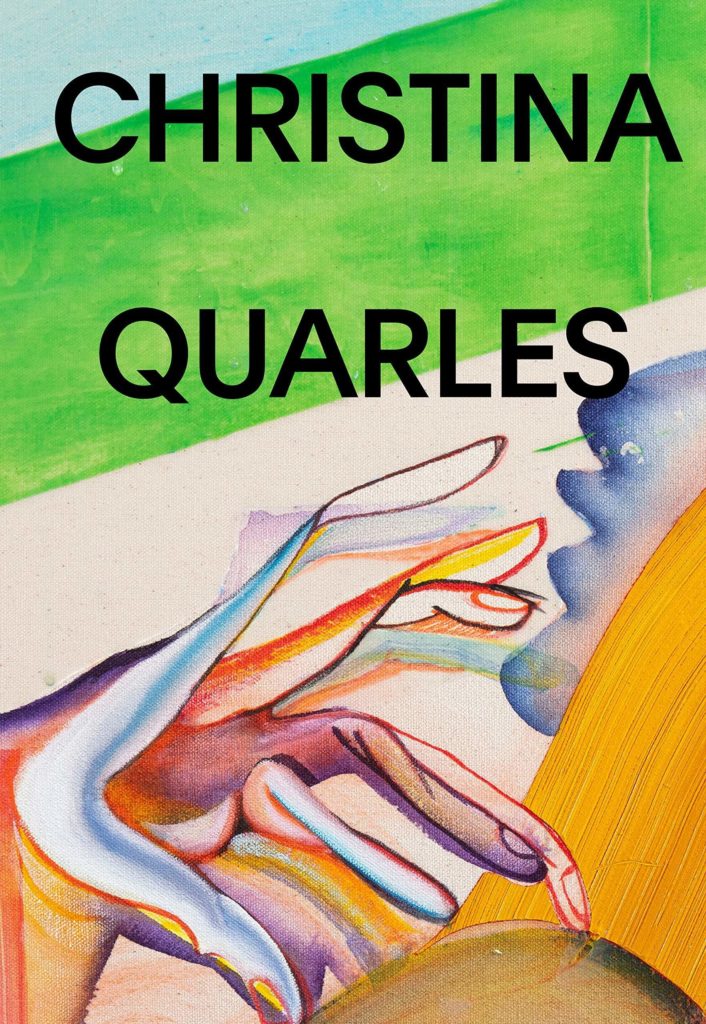
Christina Quarles, by Grace Deveney. Publisher: Prestel, with the Museum of Contemporary Art Chicago (2020).
This book features paintings and drawings from throughout Christina Quarles’s career. Working mostly in acrylic, Quarles populates her canvases with polymorphous figures that reference her background in life drawing, but with an expressionist spin all her own. Her figures’ disconnected arms and legs break through a surface punctuated with bold patterns, textures, and staccato markings. Curator Grace Deveney’s illuminating insights into Quarles’s work reinforce its power and vitality and illuminate why this young painter is making waves in the contemporary art world.
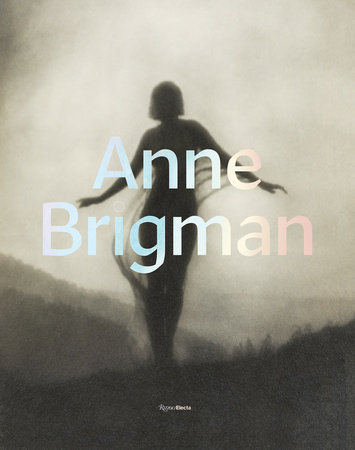
Anne Brigman: A Visionary in Modern Photography, with contributions by by Ann M. Wolfe, Alexander Nemero, Susan Ehrens, Kathleen Pyne and Heather Waldroup. Publisher: Rizzoli (2020).
This monumental publication rediscovers and celebrates the work of Anne W. Brigman (1869–1950), one of the most important of all American women photographers, whose art was considered radical for its time. Brigman’s significance spanned both coasts: in northern California, where she lived, she was known as a poet, a critic, and a member of the Pictorialist photography movement, whose practitioners employed various methods of manipulation to achieve images that were considered beautiful and romantic. On the East Coast, her work was promoted by Alfred Stieglitz, who published her photographs in Camera Work and elected her as a Fellow of the prestigious Photo-Secession. This book is the main volume of a previously published slipcased edition is the catalogue of the major retrospective exhibition that took place in 2018 at the Nevada Museum of Art, and remains the first comprehensive book to chronicle the life and work of this important artist.
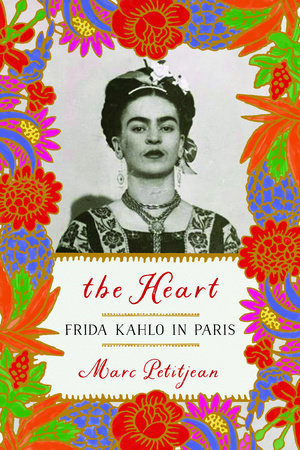
The Heart: Frida Kahlo in Paris, by Marc Petitjean; translated by Adriana Hunter. Publisher: The Other Press (2020); distributed by Penguin Random House.
In early 1939, anxious and adrift, Frida Kahlo traveled from the United States to France—her only trip to Europe, and the beginning of a unique period of her life when she was enjoying success on her own. Now, for the first time, this previously overlooked part of her story is brought to light in exquisite detail. Marc Petitjean takes the reader to Paris, where Kahlo spends her days alongside luminaries such as Pablo Picasso, André Breton, Dora Maar, and Marcel Duchamp.
Using Kahlo’s whirlwind romance with the author’s father, Michel Petitjean, as a jumping-off point, The Heart: Frida Kahlo in Paris provides a striking portrait of the artist and an inside look at the history of one of her most powerful, enigmatic paintings.
Read reviews of this book in Publishers Weekly and The Washington Post.

Alice Trumbull Mason: Pioneer of American Abstraction, with contributions by Thomas Micchell, Christina Weyl, Elisa Wouk Almino, Will Heinrich and Marilyn R. Brown. Publisher: Rizzoli (2020).
A groundbreaking artist, Alice Trumbull Mason (1904–1971) was one of the earliest painters of the twentieth century to embrace abstract painting in America. Mason was a true artist’s artist whose efforts helped lead to the great movements of later twentieth-century art, such as Abstract Expressionism, Pop Art, Post-Modernism, and Conceptual Art. Alice Trumbull Mason features essays that illuminate and contextualize the artist’s multifaceted work and personal life through her paintings, prints, poetry, and letters. The book reveals the full life story of a seminal abstractionist, making a sound argument for adding her to the annals of great twentieth-century artists.

Everything She Touched: The Life of Ruth Asawa, by Marilyn Chase. Publisher: Chronicle Books (2020)
Everything She Touched recounts the incredible life of the American sculptor Ruth Asawa.
This is the story of a woman who wielded imagination and hope in the face of intolerance and who transformed everything she touched into art. In this compelling biography, author Marilyn Chase brings Asawa’s story to vivid life. She draws on Asawa’s extensive archives and weaves together many voices—family, friends, teachers, and critics—to offer a complex and fascinating portrait of the artist.

- Veritas: Poems after Artemisia, by Jacqueline Saphra, with a Foreword by Jordana Pomeroy. Publisher: Hercules Editions (2020).
Jacqueline Saphra’s sonnet cycle positions Artemisia Gentileschi as an icon for our times—a woman who fought against injustice and established herself as an independent artist. Veritas: Poems after Artemisia also includes an introductory essay by Gentileschi expert Dr. Jordana Pomeroy, Director of the Patricia & Phillip Frost Art Museum in Miami, Florida, and an afterword by the author. Each sonnet is accompanied by a full-colour reproduction of the Gentileschi painting that inspired it. The first edition is limited to 300 copies, signed by the author.
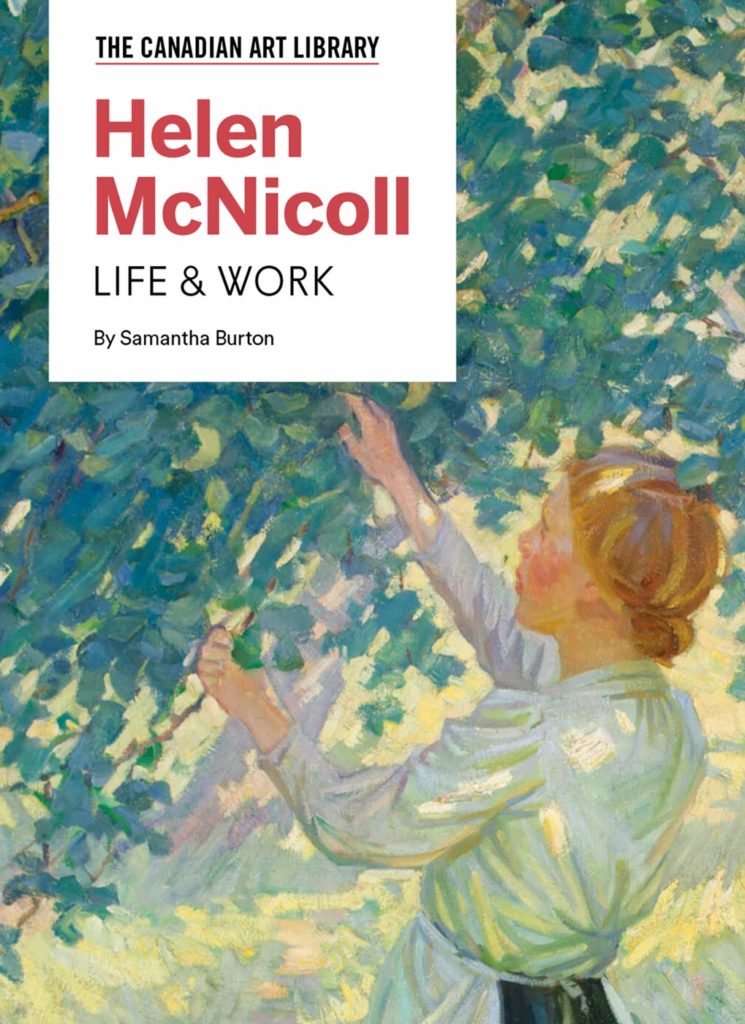
- Helen McNicholl, Life and Work, by Samantha Burton. Publisher: Art Canada Institute (2020).
Helen McNicoll: Life & Work explores the impressive career of a Canadian impressionist who, until recently, has been relatively little known to the public. Celebrated in her own day as technically advanced and “profoundly original,” at the time of her death McNicoll had exhibited over seventy works in exhibitions in Canada and England, some of which are published here for the first time. The book describes the artist’s life from her early years in Montreal, examining the possibilities and limitations faced by a professional woman artist in the years just before the First World War, to McNicoll’s significant role in the transmission of Impressionism to Canada. Using her luminous canvases to discuss issues such as femininity and domesticity, rural labour, fashion, and tourism, the book reveals McNicoll’s body of work as diverse, complicated, and surprisingly modern.
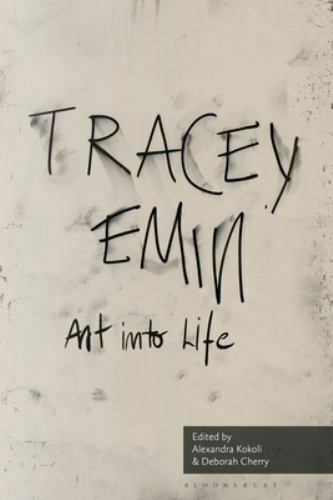
- Art into Life: Essays on Tracey Emin, edited by Deborah Cherry and Alexandra Kokoli. Publisher: Bloomsbury, 2020.
In this volume writers from a range of art historical, artistic and curatorial perspectives examine how Emin’s art, life and celebrity status have become inextricably intertwined. This innovative collection explores Emin’s intersectional identity, including her Turkish-Cypriot heritage, ageing and sexuality, reflects on her early years as an artist, and debates issues of autobiography, self-presentation and performativity alongside the multi-media exchanges of her work and the tensions between art and craft. With its discussions of the central themes of Emin’s art, attention to key works such as My Bed, and accessible theorization of her creative practice, Art into Life is of interest to a broad readership.
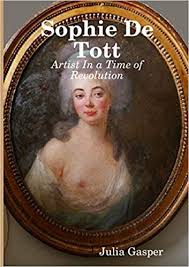
- Sophie De Tott: Artist In a Time of Revolution, by Julia Gasper. Publisher: Lulu.com (2020).
This book explores the extraordinary life of Sophie de Tott, an artist, writer, musician and secret agent who witnessed the French Revolution firsthand. Born in Constantinople, she came to France as a young woman and suffered agonies when her father would not allow her to marry the man she desperately loved. She wrote a tragic novel that mirrored her own unhappy love life. She knew many of the most famous people of her time, including French monarchs and Thomas Jefferson. In seeking to unravel the truth about her secret love child—and the lengths to which she went to avoid scandal—this biography doubles as a detective story.
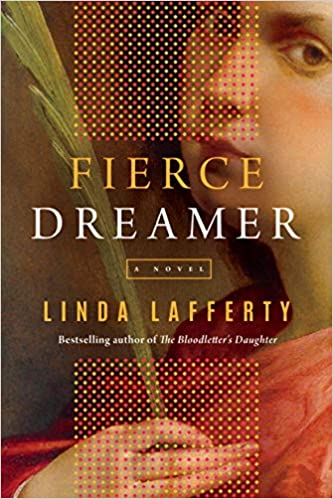
- Fierce Dreamer: A Novel, by Linda Lafferty. Publisher: Lake Union Publishing (2020).
Born in the bustling artist quarter of Rome, Artemisia, daughter of renowned painter Orazio Gentileschi, is unavoidably drawn into a profession unheard of for women. With an innate grasp of color, light, and composition, and inspired by the mercurial Caravaggio, the fiery Artemisia embraces her calling with a precocious brilliance. But as a young woman, she also finds herself oppressed by a powerful patriarchy, and she is forced to endure emotional and physical abuse at the hands of men. Until a shattering act of violence unleashes Artemisia’s righteous fury.
Refusing to be silenced and resolved to best men at their own games, Artemisia does what no woman had dared to do before. She fights back. A bracing historical novel about a woman boldly at odds with her time, Fierce Dreamer explores the fearless determination that would fuel Artemisia Gentileschi’s most courageous works of art and make her independent voice a vital one for our own time.

- Women Art Workers and the Arts and Crafts Movement, by Zoë Thomas. Publisher: Manchester University Press (2020).
This book constitutes the first comprehensive history of the network of women who worked at the heart of the English Arts and Crafts movement from the 1870s to the 1930s. Challenging the long-standing assumption that the Arts and Crafts simply revolved around celebrated male designers like William Morris, it instead offers a new social and cultural account of the movement, which simultaneously reveals the breadth of the imprint of women art workers upon the making of modern society. Thomas provides unprecedented insight into how women navigated authoritative roles as “art workers” by asserting expertise across a range of interconnected cultures—from the artistic to the professional, intellectual, entrepreneurial and domestic. Through examination of newly discovered institutional archives and private papers, Zoë Thomas elucidates the critical importance of the spaces around which women conceptualized alternative creative and professional lifestyles.
This book is the winner of the Women’s History Network’s 2021 Book Prize. In 2022, Historians of British Art awarded it the HBA prize for a single-authored book with a subject between 1800–1960.
Previous Art Herstory posts on books about women artists
New Books About History’s Women Artists | July–Sept 2021
New Books About History’s Women Artists | Apr–Jun 2021
New Books About History’s Women Artists | Jan–March 2021
New Books about History’s Women Artists | Oct–Dec 2020
New Books About History’s Women Artists | July–Sept 2020
New Books About History’s Women Artists | Jan–Mar 2020
Ten Intriguing Books About Remarkable Women Artists, a guest post by Carol M. Cram
